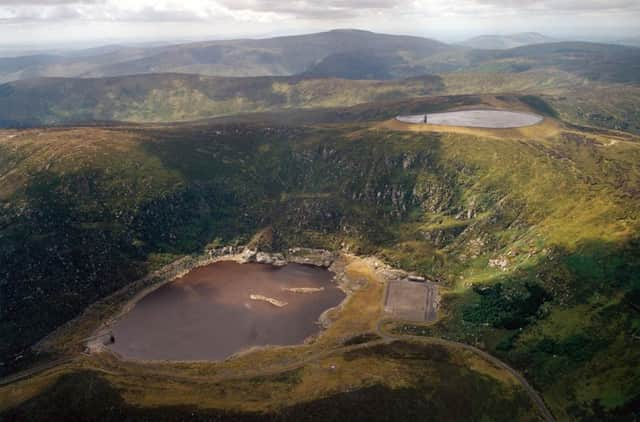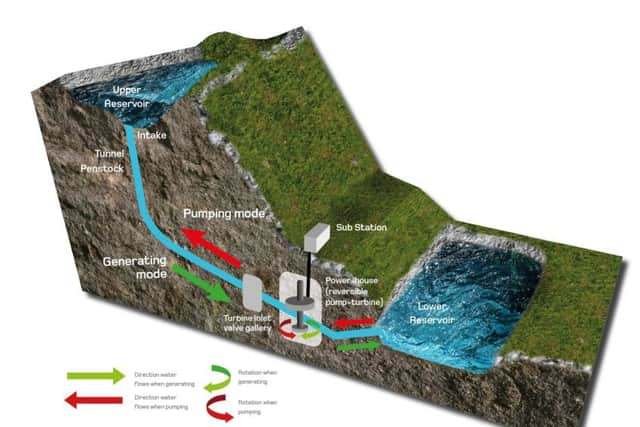Meet Red John - the Highland hydro scheme that could be a gamechanger for renewables


Red John would follow the example of existing pumped-storage hydroelectric schemes by making use of two water sources connected by a pressure tunnel.
The complex project is designed to make use of the natural resources of Loch Ness while minimising any visual impact on an area of outstanding natural beauty by constructing a power station with generating capacity of 400MW underground.
Advertisement
Hide AdAdvertisement
Hide AdWater would be pumped from the loch and a newly created upper reservoir using the natural topography between Loch Duntelchaig, Loch Ashie and Loch na Curra and Lochan an Eoin Ruadha - from where the development gets the Red John name.


The system would be similar to an existing facility at Turlough Hill in the Republic of Ireland, where water is pumped up from a lower reservoir to an upper reservoir, using surplus power available at times of low demand, and then allowed to fall by gravity from the upper reservoir back into the lower reservoir, passing through turbines along the way to generate electricity.
The storage capacity offered by Red John is viewed by developers as a key part of its appeal.
Storage is an essential enabler in the energy transition, allowing the grid to store energy that cannot be absorbed naturally by consumers during times of peak wind or solar generation.
Pumped storage hydro (PSH) is one of the cleanest energy storage technologies currently available.
The developer of the Red John PSH scheme, Hamilton-based Intelligent Land Investments, said it was keen for the community to take a stake in what could be a “transformational” development.
Mark Wilson, CEO of ILI, said: “Renewable energy capacity in Scotland has more than doubled since 2007, but due to its intermittent nature there is a need to store surplus energy from sources such as wind so it can be used when we need it most.
“Pumped storage hydro is the largest and cleanest form of energy storage that currently exists – and a key enabler in helping Scotland meet its green energy ambitions.
Advertisement
Hide AdAdvertisement
Hide Ad“As well as dramatically improving our energy security, this transformational proposal is a fantastic opportunity for the community to benefit from the energy transition while helping turbo-charge Scotland’s decarbonisation efforts.”
It is anticipated that the construction phase will create between 200-300 jobs and, once complete, Red John would be able to provide 2.4GWh of storage capacity for the Grid over a six hour period.
Mr Wilson added: “We will take some time to consider the views of the community and take these into account when preparing our final planning application. It is our hope that we can secure planning permission and the necessary licences to allow construction to commence in 2020. We anticipate the project will be completed in 2025.”
The similar power station at Turlough Hill opened in 1974. The power station is designed to generate electricity at times of peak demand and is instantly dispatchable - meaning it can go from standstill to full generation within 13 seconds,
The eastern shore of Loch Ness already has one hydro power station, the SSE-operated Foyers - a combined pumped storage and conventional hydro electric scheme.
Electricity generation in the area stretches back to 1896 when power was needed to supply an aluminium smelter which closed in 1971.